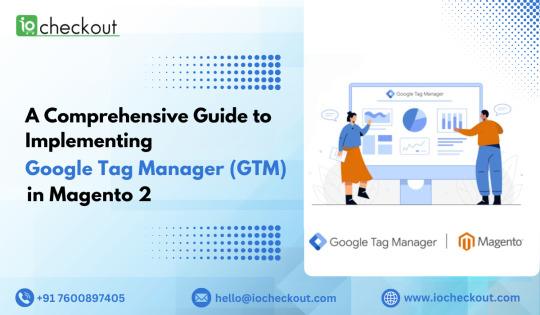#magento solution
Explore tagged Tumblr posts
Text
🛍️ eCommerce Solutions in Dubai – Daiyra 360 Communication

Looking to launch or scale your online business? At Daiyra 360 Communication, we offer expert eCommerce solutions in Dubai, specializing in the development of fast, secure, and fully responsive eCommerce websites tailored for businesses across the UAE.
Whether you're a startup or an established brand, we develop customized online stores using:
✅ Shopify eCommerce solutions ✅ WooCommerce store development ✅ Magento eCommerce platforms ✅ Secure payment gateways ✅ Inventory & order management systems ✅ SEO optimization for better traffic & visibility
If you're searching for trusted eCommerce website development company in Dubai, our goal is to help you sell smarter, faster, and better — online.
#ecommerce solutions Dubai#ecommerce website Dubai#Shopify developer UAE#WooCommerce UAE#Magento ecommerce Dubai#web development company UAE#digital marketing Dubai#custom ecommerce website UAE#Daiyra 360 Communication
0 notes
Text
Looking to upgrade your Magento store without downtime or data loss? SMB Tech Solution offers expert Magento migration services that protect your SEO, customers, and performance. Secure, smooth, and scalable migration done right. Visit: https://smbtechsolution.com/magento-1-to-magento-2-migration-services/
0 notes
Text
Magento 2 eCommerce Development: Unlocking the Future of Online Retail
In today’s digital-first world, having a robust and scalable online store is no longer a luxury—it's a necessity. If you’re planning to start or upgrade your eCommerce business, Magento 2 eCommerce development might just be the game-changer you’re looking for.
Magento has long been hailed as a powerhouse in the eCommerce world, and its latest version, Magento 2, brings a whole new level of performance, flexibility, and user experience. Let’s dive into what makes Magento 2 the preferred choice for businesses aiming to thrive in the competitive online landscape.
Why Choose Magento 2 for Your eCommerce Store?
1. Enhanced Performance & Scalability
Magento 2 is built for speed and efficiency. With improved page load times and streamlined backend processes, your customers can enjoy a faster shopping experience while you benefit from better performance under heavy traffic.
2. Mobile-First Design
In an age where mobile commerce is booming, Magento 2 steps up with responsive design features. Your store will look and function flawlessly across smartphones, tablets, and desktops—ensuring a consistent and engaging shopping experience for all users.
3. Customisation at Its Best
Magento 2 offers unmatched flexibility with its modular architecture. Whether you're running a small boutique or a large-scale enterprise, Magento 2 allows you to tailor every element of your store to align perfectly with your brand and business goals.

Key Features That Make Magento 2 Stand Out
✅ Advanced Admin Interface
Magento 2 comes with a user-friendly and intuitive admin panel that simplifies store management. From tracking sales to managing inventory and customer data, everything is designed to save you time and boost productivity.
✅ Improved Checkout Process
A smooth and fast checkout process is vital for reducing cart abandonment. Magento 2 features a streamlined, two-step checkout that enhances user experience and encourages conversions.
✅ SEO & Marketing Tools
Magento 2 is packed with built-in SEO features and marketing tools. It supports meta tag management, sitemaps, URL rewrites, and more—helping your store rank better on search engines and reach your target audience effectively.
Magento 2: Ideal for Businesses of All Sizes
One of the standout strengths of Magento 2 is its versatility. Whether you are a startup aiming for rapid growth or a well-established brand looking for sophisticated eCommerce solutions, Magento 2 adapts to your needs with ease. From multi-store functionality to multi-language and multi-currency support, it’s designed for businesses with both local and global aspirations.
Magento 2 Development with Experts
While Magento 2 is a powerful platform, getting the most out of it requires expert development and support. Working with a seasoned Magento development team ensures:
Smooth migration from Magento 1 or other platforms
Custom theme and module development
Ongoing support and optimization
Seamless integration with third-party tools like CRMs, ERPs, and payment gateways
Final Thoughts
Magento 2 eCommerce development is more than just a technical upgrade—it's a strategic move to future-proof your online business. With its rich features, flexibility, and focus on user experience, Magento 2 sets the stage for sustainable growth and innovation in the digital marketplace.
So, whether you’re launching a new store or revamping an existing one, investing in Magento 2 development is a step in the right direction.
#Magento 2 Development#eCommerce Website Development#Magento 2 Features#Online Store Solutions#Magento 2 Customization
0 notes
Text
Simplify Magento hosting migration with our expert Magento migration solutions. As a trusted Magento migration agency, we help you launch faster and perform better with Hyvä Theme integration services and optimized Hypernode hosting. As a leading Magento migration company and Magento Hyvä theme development company, we ensure seamless transitions.Hire Magento migration experts today and enjoy 3 months of free hosting!
#magento migration agency#magento migration company#hire magento migration expert#magento migration solutions#magento hyvä theme development company#Hyva Theme integration services
0 notes
Text
What Key challenges do you face in your retail business?
+ Reduction of operative cost and expenses
+ Seamless Customer Experience across all Channels
+ Right Technology Implementation
+ Increase of Customer base and Consumer engagement
+ Market business and create brand awareness
+ Automate process and technology
Connect us to help you in your retail business.

#technology#automation#startup#trendingnow#retailsolutions#retail technology#retail investors#techjour#retail#ecommerce#odoo crm#odoo services#odoo development company#odooimplementation#cloud solutions#cloud service provider#magento#customer experience#customer engagement
0 notes
Text
How Magento eCommerce Development Helps Businesses?

In the rapidly evolving digital landscape, businesses need an online store that can support growth, adapt to changing market conditions, and offer customers a seamless shopping experience. Magento eCommerce solution has proven to be one of the most powerful, flexible, and scalable platforms available for businesses of all sizes. Whether you're launching a new business or looking to enhance an existing one, Magento's robust features can help streamline operations and improve online sales.
What is Magento eCommerce Solution?
Magento, now part of Adobe Commerce, is an open-source eCommerce platform that enables businesses to create highly customizable and feature-rich online stores. Offering a range of tools to support product management, marketing, sales, and customer service, Magento eCommerce solution empowers businesses to build tailored shopping experiences while also improving back-end processes.
How Magento eCommerce Development Helps Businesses?
1. Scalable for Business Growth
One of the standout features of the Magento eCommerce solution is its scalability. As your business grows, so do your needs. Whether you’re adding more products, expanding to new markets, or scaling up your marketing efforts, Magento can handle your increasing demands. The platform can support thousands of SKUs, high traffic volumes, and complex business operations without compromising performance.
By leveraging Magento's flexibility, businesses can scale quickly and efficiently, ensuring they don’t outgrow their eCommerce solution.
2. Highly Customizable to Fit Unique Needs
Every business is unique, and Magento offers the ability to tailor your store to your specific needs. With the open-source nature of Magento eCommerce solution, developers can create custom themes, extensions, and modules that suit your business model and customer preferences. Whether you require advanced inventory management, payment gateways, or specialized shipping methods, Magento provides the tools to implement them seamlessly.
Customizing your store ensures that it aligns with your brand’s identity and delivers a unique shopping experience that stands out from competitors.
3. Seamless Mobile Experience
With the majority of online shopping now occurring on mobile devices, offering a seamless mobile experience is crucial for any eCommerce business. Magento’s responsive design ensures that your store looks and functions beautifully across all devices—smartphones, tablets, and desktops.
Additionally, Magento supports Progressive Web Apps (PWA), enabling your store to function like a native mobile app, improving load speeds, providing offline access, and offering push notifications. This mobile-first approach is essential for driving higher conversion rates and enhancing customer satisfaction.
4. Robust SEO Capabilities
Search engine optimization (SEO) is key to attracting organic traffic and ranking higher in search results. Magento eCommerce solution is designed with SEO in mind, providing built-in tools that help improve your website's visibility. From customizable URL structures to sitemaps and meta tags, Magento ensures that your store is search-engine friendly.
Other features include:
Fast loading speeds for better rankings
Mobile-friendly design for Google’s mobile-first indexing
Structured data and schema markup for rich snippets
By optimizing for SEO, Magento helps your store gain more visibility and drive more qualified traffic, ultimately increasing conversions.
5. Enhanced Customer Experience
Customer experience is at the heart of eCommerce success, and Magento eCommerce development offers a wealth of features to improve how customers interact with your store. With advanced product management tools, you can provide detailed product descriptions, high-quality images, and personalized recommendations.
Magento’s customer segmentation features allow you to tailor content, offers, and promotions based on customer behavior, increasing engagement and retention. Additionally, its built-in customer loyalty programs encourage repeat purchases, which are essential for long-term success.
6. Powerful Analytics & Reporting Tools
Magento’s powerful analytics and reporting tools provide valuable insights into how your store is performing. With real-time data on sales, traffic, and customer behavior, you can make data-driven decisions to optimize your operations and marketing efforts.
Key reports include:
Sales and revenue reports
Customer behavior analytics
Inventory and stock management insights
Marketing campaign performance
By understanding these metrics, businesses can identify areas for improvement, optimize strategies, and boost profitability.
7. Seamless Integrations with Third-Party Tools
Magento’s flexibility extends to its ability to integrate with a wide range of third-party tools and services. Whether you need a payment gateway, shipping provider, or customer relationship management (CRM) system, Magento eCommerce solution integrates seamlessly with many popular solutions.
This ensures that your eCommerce store can function smoothly alongside your other business operations, from accounting to customer service, improving overall efficiency.
8. Strong Security Features
In today’s digital world, ensuring the security of customer data is crucial. Magento provides a range of security features to protect sensitive information, including PCI compliance, secure payment gateways, and SSL encryption. Regular security patches and updates are also rolled out to address vulnerabilities, keeping your online store safe from cyber threats.
Conclusion
Magento’s flexibility, scalability, and powerful features make it an ideal choice for businesses looking to build a future-proof eCommerce store. From personalized customer experiences to advanced SEO capabilities and seamless integrations, the Magento eCommerce solution offers everything a business needs to succeed in today’s competitive online marketplace.
By choosing Magento eCommerce development, businesses can create a tailored online store that drives growth, boosts customer satisfaction, and delivers long-term success. Whether you're starting small or aiming to scale globally, Magento provides the tools and support you need to reach your business goals.
0 notes
Text
Boost Magento Sales with Powerful CRM Integration
Automate workflows, gain valuable customer insights, and improve operational efficiency with integrated magento CRM solutions for your Magento store.
Read the full information - https://www.magentoindia.in/
0 notes
Text

Shopify Development Company | Shopify Store Development
Atlas SoftWeb is one of the best Shopify Development Companies that is ready to be your Shopify partner for eCommerce.
Atlas SoftWeb is a top Shopify development company having a skilled team of Shopify experts that can help you build a results-driven and interactive eCommerce website for your business.
Best Shopify Development Agency Our Shopify professionals can provide cutting-edge web solutions to build your extraordinary website that effectively reaches your desired audience. Hiring Shopify experts at Atlas will make your business stand out.
Get more details on : shopify development company
#shopify experts#shopify development#shopify ecommerce development#hire shopify developers#hire shopify developer#hire shopify experts#web designer#ecommerce solution#ecommerce solutions#ecommerce website design#ecommerce design#ecommerce marketing#magento development company#wordpress development#magento developer#web developer
1 note
·
View note
Text
The Benefits of Using Magento for Custom E-Commerce Solutions
As businesses continue to evolve in the digital space, the need for robust, adaptable, and scalable e-commerce platforms becomes even more crucial. While there are several e-commerce solutions available in the market, Magento E-commerce Development Services stand out as a top choice for businesses looking to deliver a customized, high-performing online shopping experience. Known for its flexibility and powerful features, Magento allows businesses to create personalized e-commerce platforms tailored to their specific needs. Whether you're aiming to enhance customer experience, optimize operations, or scale your business, Magento offers the perfect framework to achieve these goals with a custom, highly efficient e-commerce solution.
Why Choose Magento for Custom E-Commerce Solutions?
When it comes to crafting unique e-commerce experiences, Magento offers a level of customizability and scalability that few platforms can match. Unlike some of its competitors, Magento provides businesses with complete control over every aspect of their online stores, from design and functionality to user experience. Below are some of the key reasons why Magento is the ideal platform for creating custom e-commerce solutions:
1. Tailored User Experience
Magento enables businesses to provide a truly personalized shopping experience for their customers. With built-in customer segmentation, businesses can offer personalized promotions, product recommendations, and targeted content based on the customer’s browsing behavior and purchase history. This helps enhance the customer journey, increasing the likelihood of repeat purchases and customer loyalty.
2. Customizable Themes and Designs
Unlike many other e-commerce platforms that provide limited design templates, Magento offers vast customization capabilities. Businesses can develop fully customized themes and layouts that align with their brand identity. Whether you need a sleek, modern design or a more complex, feature-rich layout, Magento gives developers the freedom to create designs that are both aesthetically pleasing and functionally rich.
3. Scalable Solutions for Growth
As businesses grow, so do their needs. Magento is a highly scalable platform that can handle increased traffic, larger product catalogs, and more complex transactions. The platform is capable of supporting a business’s expansion, whether it involves launching new product lines, targeting international markets, or handling high-volume sales during peak seasons.
4. Integrated Payment and Shipping Solutions
Magento comes with a variety of out-of-the-box payment and shipping integrations, allowing businesses to offer multiple payment methods and shipping options to their customers. Whether you're using PayPal, credit cards, or custom payment gateways, Magento makes it easy to integrate these solutions seamlessly. It also supports real-time shipping rates and easy checkout processes, which improve conversion rates and customer satisfaction.
5. Robust Analytics and Reporting Tools
Magento provides powerful analytics and reporting tools that allow businesses to track key performance indicators (KPIs), monitor sales trends, and identify areas for improvement. By accessing real-time data, businesses can make data-driven decisions and optimize their online store for better performance and profitability.
6. Mobile-Optimized Designs
With mobile commerce on the rise, having a mobile-friendly website is crucial for success. Magento's mobile-optimized designs ensure that your e-commerce site delivers a seamless shopping experience across devices, from smartphones to tablets. This helps you capture a broader audience and increase sales potential.
7. Advanced SEO Features
Magento is built with SEO in mind, offering tools that help businesses improve their search engine rankings. From SEO-friendly URLs to automated sitemap generation and meta tag customization, Magento ensures that your products and pages are optimized for search engines, driving more organic traffic to your site.
How Magento Enhances Business Operations
Beyond its customer-facing benefits, Magento also optimizes internal business operations. Here's how:
Streamlined Inventory Management: Magento helps businesses manage large product catalogs and inventories with ease. From automatic stock updates to centralized order management, Magento ensures businesses stay on top of their inventory in real time.
Third-Party Integrations: Magento’s open-source nature allows businesses to integrate with a wide range of third-party applications such as ERP, CRM, and marketing automation tools. These integrations streamline business processes, making it easier to manage customer relationships, logistics, and marketing campaigns.
Security and Performance: Magento comes with robust security features, including regular software updates, encryption tools, and secure payment processing. By implementing full-page caching and optimizing server performance, Magento ensures a fast and secure shopping experience for customers.
Conclusion: Why Magento Is a Game-Changer for E-Commerce
Magento is more than just an e-commerce platform; it’s a comprehensive solution that empowers businesses to create unique, scalable, and high-performing online stores. Its ability to integrate with third-party systems, offer extensive customization options, and optimize for performance makes it a standout choice for businesses looking to provide a personalized e-commerce experience. With the right Magento development team, businesses can unlock the full potential of the platform and stay ahead of the competition.
If you're ready to start your Magento journey and take your e-commerce operations to the next level, Sumcircle Technologies is here to help. Our expert Magento developers specialize in creating custom e-commerce solutions that are tailored to your business needs. Let us guide you through the process of building a powerful, scalable online store that drives growth and delivers results.
#The Benefits of Using Magento for Custom E-Commerce Solutions#Magento E-commerce Development Services
0 notes
Text
Boost your Magento store with custom module development by TheCoachSMB. Tailored, scalable, and performance-optimized extensions built to elevate your eCommerce experience. Visit: https://www.thecoachsmb.com/theme-development-tutorial-step-by-step/
0 notes
Text
#magento ecommerce development#oscommerce development#e-commerce solution provider from the netherland#best website design firm
0 notes
Text
Looking to hire a Magento migration expert or hire a dedicated Magento developer? Evrig, a top Magento development company, offers certified experts to help elevate your store. Get in touch today for tailored Magento solutions and seamless project delivery!
#hire magento migration expert#hire dedicated magento developer#magento migration service#magento 2 migration service#data migration magento 2#data migration magento 1 to 2#magento 1 to 2 migration cost#magento 1 to magento 2 migration service#magento 2 data migration service#magento 2 migration company#magento migration company#magento migration solutions
0 notes
Text
AEM Vs. Other CMS: Which Is The Right Choice For Your Business?
In digital content management, selecting the right Content Management System (CMS) is crucial for your business's success. The decision can be daunting with numerous options available, each offering unique features. Among the top contenders is Adobe Experience Manager (AEM), a powerful and versatile CMS. But how is it different from other popular CMS platforms?

Let's explore a comparative analysis to guide you in making an informed decision.
1. AEM Vs. WordPress: WordPress is user-friendly and has a vast plugin ecosystem, making it ideal for small to medium-sized businesses seeking a cost-effective, quick solution. However, AEM offers superior scalability, security, and personalized content delivery, making it suitable for large enterprises with complex needs.
2. AEM Vs. Drupal: Drupal is flexible with strong community support, excelling in complex websites with heavy customization. AEM, however, offers a more intuitive interface and seamless integration with Adobe's marketing tools, providing businesses with an edge in personalized, engaging experiences.
3. AEM Vs. Joomla: Joomla balances user-friendliness with customization, perfect for small businesses and non-profits. Yet, AEM’s advanced targeting, asset management, and analytics make it a more powerful choice for enterprises aiming for highly personalized customer journeys.
4. AEM Vs. Sitecore: Sitecore and AEM both offer enterprise-grade capabilities. While Sitecore excels in personalization and customer experience, AEM’s integration with Adobe’s Creative Cloud and Marketing Cloud streamlines content creation and distribution, enhancing overall efficiency.
5. AEM Vs. Kentico: Kentico offers versatile on-premise and cloud solutions with ease of use. However, AEM’s dynamic media management, AI-driven insights, and superior scalability make it a better choice for businesses with extensive digital transformation goals.
6. AEM Vs. Magento: Magento is excellent for eCommerce, offering robust online store features. While AEM supports eCommerce through integrations, its strength lies in managing and delivering personalized content across channels, ideal for content-driven strategies.
7. AEM Vs. Shopify: Shopify is known for its simplicity in setting up online stores, perfect for small to medium-sized businesses. In contrast, AEM’s capabilities in creating personalized, omnichannel experiences and powerful asset management make it suitable for larger enterprises with complex content needs.
8. AEM Vs. Squarespace: Squarespace offers beautiful templates and ease of use, favored by creatives and small businesses. AEM, with its advanced marketing tools and scalability, provides a more comprehensive solution for enterprises integrating content management with sophisticated marketing strategies.
9. AEM Vs. Wix: Wix’s drag-and-drop simplicity and affordability appeal to small businesses and individuals. AEM’s enterprise-grade features, robust security, and integration with Adobe’s suite offer unparalleled advantages for large organizations with demanding content and marketing needs.
10. AEM Vs. HubSpot CMS: HubSpot CMS excels in marketing automation and CRM integration, ideal for inbound marketing. AEM, however, provides a unified platform for content creation, management, and distribution, coupled with advanced analytics and AI for deep customer insights.
11. AEM Vs. Umbraco: Umbraco is an open-source CMS favored for flexibility and a developer-friendly environment. While it’s suitable for custom projects, AEM’s comprehensive ecosystem, including AI and machine learning capabilities, offers a more robust solution for businesses aiming for extensive digital engagement.
12. AEM Vs. Craft CMS: Craft CMS is appreciated for its developer-centric approach and customization options. AEM’s superior asset management, scalability, and seamless integration with Adobe’s marketing and analytics tools make it the better option for enterprises focusing on high-level personalization and customer engagement.
Why Choose AEM?
AEM stands out for businesses seeking a comprehensive, scalable, and highly personalized content management solution. Its integration with Adobe’s tools, advanced asset management, and AI-driven insights provide unparalleled advantages.
AEM Experts In India: EnFuse Solutions
Partnering with experts like EnFuse Solutions India ensures you harness AEM's full potential. With extensive AEM implementation experience, EnFuse Solutions can guide your business through a successful digital transformation, delivering a seamless and impactful CMS experience.
Conclusion
While many CMS platforms offer unique benefits, AEM’s comprehensive features and scalability make it the ideal choice for businesses aiming for excellence in digital content management. This choice is further supported by EnFuse Solutions, enhancing the potential for personalized customer experiences.
#AEM vs WordPress#AEM vs Drupal#AEM vs Joomla#AEM vs Sitecore#AEM vs Kentico#AEM vs Magento#AEM vs Shopify#AEM vs Squarespace#AEM vs Wix#AEM vs HubSpot CMS#AEM vs Umbraco#AEM vs Craft CMS#AEM Experts In India#EnFuse Solutions India
0 notes
Text
Future Trends in Magento 2 SSR Solutions
The landscape of e-commerce is constantly evolving, and Magento 2 SSR solutions are no exception. As technology advances, new trends and innovations emerge, shaping the future of SSR in Magento 2. This article explores some of the key trends that are likely to influence the future of SSR solutions for Magento 2. AI and Machine Learning Integration: AI and machine learning are set to play a…

View On WordPress
0 notes
Text
A Comprehensive Guide to Implementing Google Tag Manager (GTM) in Magento 2

Marketing is entirely contingent upon knowing the user's patterns of behavior. Using Google Tag Manager (GTM), industries can effectively measure marketing trends, gather informative data, and monitor user actions. GTM and Magento 2 integration will enhance your data collection skills even more, helping you make the proper decision. This how-to manual graciously introduces the GTM system in Magento 2, emphasizing IoCheckout as a specific example and explaining the benefits and easy installation differentiator.
Understanding Google Tag Manager (GTM)
Google Tag Manager is a free tool for managing and deploying marketing tags (code snippets or tracking pixels) on your website without cheating the source code. GTM makes it simpler to attach new tags, which in turn enables you to follow up on user interactions, conversion rates, and other main factors.
Benefits of GTM Tracking
Ease of Setup and Use: GTM's interface is friendly and intuitive, just like you would expect it to be, even if you are not a computer professional.
Centralized Management: All your tags are stored in one place, which helps prevent mistakes and simplifies the whole process.
Customization and Flexibility: GTM allows for incredible custom changes, which let you monitor almost any user interaction and behavior you like.
Enhanced Marketing Insights: By analyzing user movements, GTM gives you real-time data crucial for refining marketing campaigns and increasing overall performance.
Integrating GTM with Magento 2
Integrating GTM into Magento 2 encompasses some cardinal steps, briefly run below. Also, the IoCheckout extension can be used in this situation; it will be easier this way, and the store admins will already have the checkout tracking set up as a default, which will take care of the user experience for the customer who is shopping on the site.
Step 1: Create an Account and Integrate IoCheckout
Sign Up for GTM: If you do not have a GTM account, you can get one by signing up at tagmanager.google.com.
Create a Container: After the sign-in step, reserve a new container to manage all your tags, triggers, and variables for your Magento 2 store.
Step 2: Add the GTM Code to Magento 2
Obtain the GTM Code: When you create the container, GTM will give you the HTML code and a second snippet.
Insert Code into Magento 2: Enter the following code into your Magento 2 store. Ideally, utilize the code in multiple web page regions, such as the header and body sections.
Step 3: Configure GTM Tags, Triggers, and Variables
Get Tags Ready: Tags are short pieces of code that you can insert into your website to track user actions. Well-known tags are Google Analytics, AdWords, and remarketing tags.
Setting Triggers: Triggers are the ones you can use to get your tags fired on any page you want. For example, to include or exclude a single or multiple pages on a website, click a form, or click an element.
Variable Creation: The variables replace the values that GTM uses to produce the tags and triggers. Surprisingly, this includes the contact form ID, website click text, and page URI.
Enhancing GTM with IoCheckout for Magento 2
IoCheckout is a Magento 2 extension that simplifies the checkout process and includes GTM tracking features. Customers can practically discern the advantages and disadvantages of these online stores by providing a glimpse into the network of grocery chain retailers.
Key Features of IoCheckout
Pre-configured GTM Tracking: The Magento 2 IoCheckout module comes with pre-configured GTM tracking for each step of the checkout process. It, therefore, facilitates the development of one to several technology concepts, including IoT and human-machine interaction, growth and management of local data, introducing analytics, network security, software development, and many other similar disciplines. Users can select and start navigating to their chosen day and time. This helps the customer to know the start time while watching for the train arrival timeframe.
Customization Options: Customizing the tracking code would be very useful. For example, it can be the addition of a required personal data field for a smoother registration process or the live address validation that saves customers time by ensuring they use the correct address the first time. These are steps where IoT technology can assist in dealing with actual problems.
Comprehensive Data Collection: IoCheckout, which you might have heard of and will tell you more about, is a powerful tool for upgrading the checkout process of your e-commerce store. Having given you all these examples, we want you to appreciate the IoT power and the hurdles the industry might face in the years ahead.
Examples include the possibility of unlocking doors through your voice, whether this will replace traditional security quickly or not. Research has been carried out on various IoT technology applications already on the market, and some are still under development. To replicate it, almost the same data should be available.
Measuring Checkout Steps with IoCheckout
Users will talk about their experience in the grocery retail environment, followed by solutions and innovation with new technologies. The checkout process is the most crucial stage in a customer's journey. You can only hop on with the task after first intelligently personalizing the network service for the customer so that you don't end up providing the wrong item, equivalently failing and potentially losing customer trust. IoCheckout's GTM tracking features make it possible for you to:
Track Each Step of the Checkout: Monitor user progress through each checkout process step, from cart review to payment confirmation. To deliver the broad range that customers have come to expect, networks must figure out how to achieve long-term success in terms of their connections' number, variety, and speed. One of the benefits of IoT for the development of smart cities is that it could help.
Optimize User Experience: By utilizing GTM tracking observations, you can customize the checkout process and improve the consumer's experience.
Essence
Google Tag Manager integration into Magento 2 is the best way to improve your different angles of tracking and marketing. GTM allows you to set short descriptions that can be managed and deployed through tags. Additionally, you can do configuration tracking according to your specific needs, and as a result, you will have access to the user behavior data. Implementing the IoCheckout extension can further optimize the process, as it was designed to include the GTM pre-configured tag system for checkout and comprises the option of extra customization. Through GTM and IoCheckout integration with your Magento 2 store, you can reach the full potential of your marketing efforts, make your website more user-friendly, and convert more customers.
#magento 2 google tag manager#Magento 2 GTM Tracking#GTM Tracking#magento 2 gtm#magento google tag manager#magento 2 tag manager#Google Tag Manager#Magento 2#eCommerce Solutions#google tag manager magento 2#magento 2 google tag manager extension
0 notes
Text
Best Web Design and Development Company in Bangladesh https://www.smartsoftware.com.bd/best-web-design-company-in-bangladesh
#Web Design Bangladesh#Web Development Company#Custom Website Design#E-commerce Development#Mobile App Development#Digital Marketing Services#Responsive Web Design#Content Management Systems#SEO Services Bangladesh#Professional Web Solutions#Top Web Development Company#UI/UX Design#PHP Development#Laravel Developers#WordPress Experts#Magento Development#React and Angular Development#Node.js Development#Business Website Development#Web Application Development
0 notes